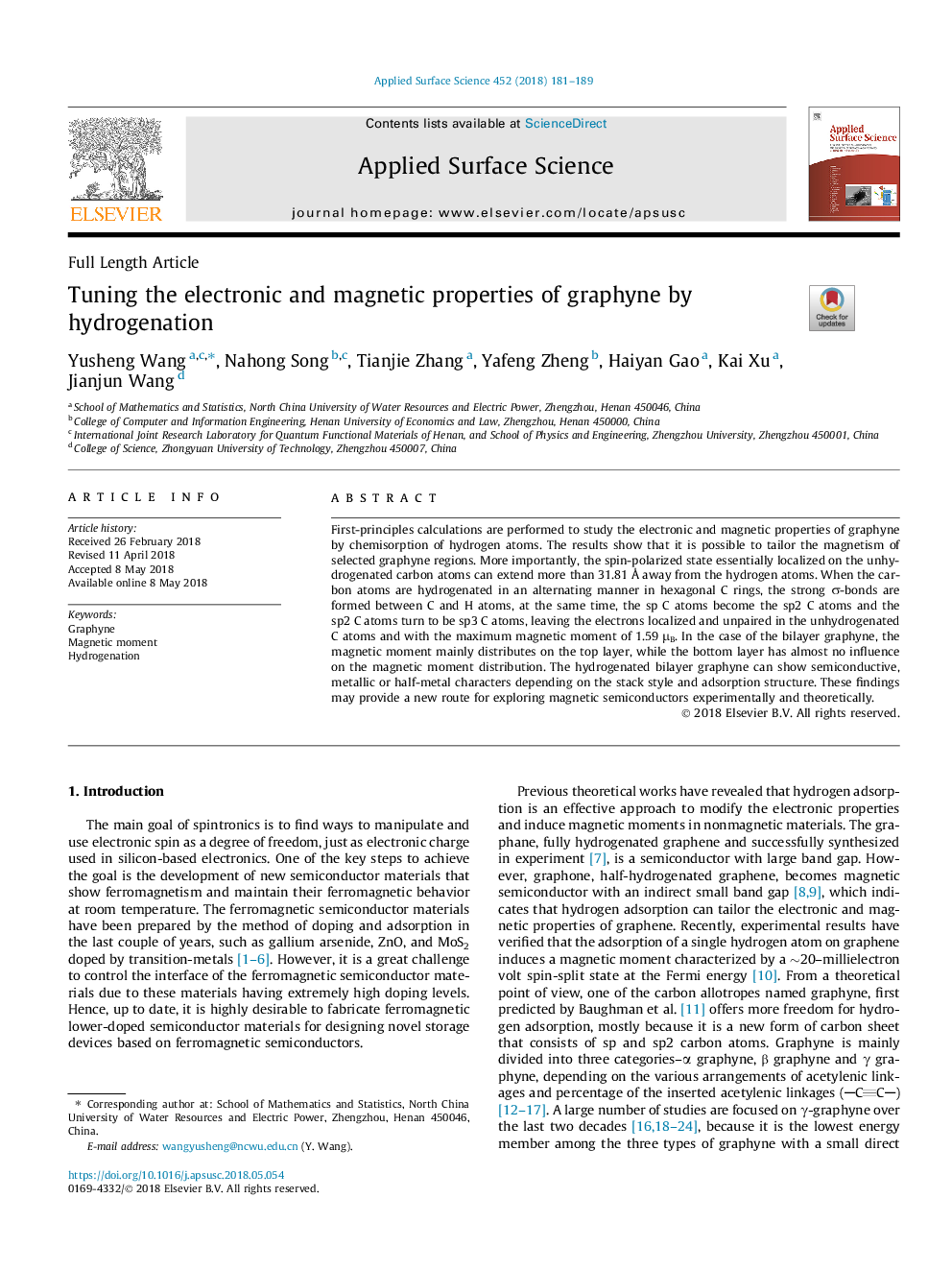| Article ID | Journal | Published Year | Pages | File Type |
|---|---|---|---|---|
| 7833400 | Applied Surface Science | 2018 | 9 Pages |
Abstract
First-principles calculations are performed to study the electronic and magnetic properties of graphyne by chemisorption of hydrogen atoms. The results show that it is possible to tailor the magnetism of selected graphyne regions. More importantly, the spin-polarized state essentially localized on the unhydrogenated carbon atoms can extend more than 31.81â¯Ã
away from the hydrogen atoms. When the carbon atoms are hydrogenated in an alternating manner in hexagonal C rings, the strong Ï-bonds are formed between C and H atoms, at the same time, the sp C atoms become the sp2 C atoms and the sp2 C atoms turn to be sp3 C atoms, leaving the electrons localized and unpaired in the unhydrogenated C atoms and with the maximum magnetic moment of 1.59â¯Î¼B. In the case of the bilayer graphyne, the magnetic moment mainly distributes on the top layer, while the bottom layer has almost no influence on the magnetic moment distribution. The hydrogenated bilayer graphyne can show semiconductive, metallic or half-metal characters depending on the stack style and adsorption structure. These findings may provide a new route for exploring magnetic semiconductors experimentally and theoretically.
Keywords
Related Topics
Physical Sciences and Engineering
Chemistry
Physical and Theoretical Chemistry
Authors
Yusheng Wang, Nahong Song, Tianjie Zhang, Yafeng Zheng, Haiyan Gao, Kai Xu, Jianjun Wang,
